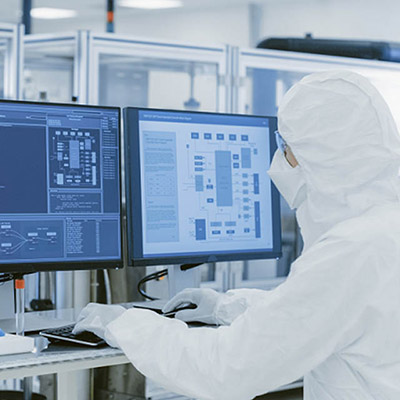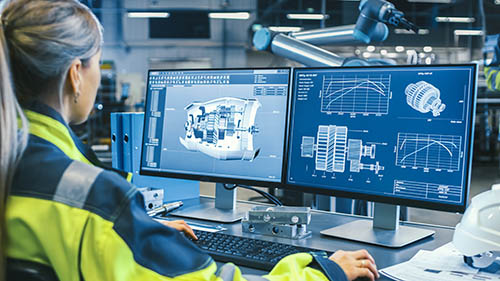Differences between designing an industrial power supply and a personal power supply
What is IPC power supply? Why is it that instead of directly using PC power supplies, IPC power supplies with specific specifications has to be selected despite the higher cost shouldered when they appear to be similar to PC power supplies of general personal computers with almost the same output voltage sets, not to mention that some PC power supplies even have higher output power? The reason behind it is the main topic of discussion in this article.
The specifications for PC power supplies of general personal computers are mainly based on Intel’s customized ATX specifications. The specifications explicitly specify three main positive voltage rails, namely, +3.3V, +5V, and +12V. An additional +5V SB (Standby) rail independent from the +5V voltage rail is added. This +5V SB (Standby) rail is not found in early IBM AT specifications. With this independent SB power rail, the possibility of turning on and off the software switch and remote wake-up can be realized. Since then, PC power subsequently developed MicroATX, FlexATX, and SFX specifications. Basically, they are ATX-based sizes and external differences, but they are still essentially extensions of ATX.
Initially, the main target groups of the Intel-customized ATX specifications are personal computers operated in home and office environments. The main purposes are document editing, programming, general Internet surfing and gaming(*1), and other general business needs. Because of the simple tasks and high specification uniformity, brand operators or DIY players alike can find suitable power products in the market that meet their needs.
IPC power, on the other hand, is different. If PC power exists based on the general conditions, then, IPC power exists based on specific application needs. Non-domestic occasions such as security, monitoring, production, communication, medical care, transportation, industrial control, etc. fall under the scope of IPC power. Because work environments vary, the requirements for work environment temperature/humidity, dust capacity, reliability, shelf life, anti-interference ability, etc. relatively differ from those of PC power.
Table 1 below show differences between PC and IPC power in terms of use/demand/applications.
Table 2 below shows differences between PC and IPC design with the same 500W power.
(*1) Games with high specifications and a higher screen resolution have undergone development to form the Gaming industry. The gaming discussed in this article are general and simple web games.
Differences between industrial computers and personal computers
| Item | Industrial computer industry/products | Personal computer industry/products |
| Targets | Industry/business/government large-scale users | Mainly for personal use |
| Operating enviroment | Adverse work environment Long working hours, high and low indoor and outdoor temperatures,humidity, vibration, electromagnetic interference, etc. | Stable work environment Short working hours, indoors, constant temperature |
| Application fields | security, monitoring, production, communication, medical care, transportation, industrial control related. | Offices, households |
| Pre-use test | Long (6 months to 2 years) | Short |
| Product lifecycle | Long(3-7 years) | Short(9 monthes~2 years) |
| Product specifications | Semi-standardized/customized | Standardized |
| Supply demand | LEmphasis on long-term supply and after-sale technical support Services | No long-term supply demand/less after-sale technical support |
| Focus of product requirements | Long-term stability quality requirements; not pursuing the fastest and the latest | The latest and the fastest with more powerful functions. |
| Production demant | Small volume, flexible production | Large volume, economies of scale |
| Mode of delivery | Small volume, large variety | Large volume, small variety |
| Period of raw material storage | Long | Short |
| Customer loyalty | High | Low |
| Barriers to entry in industrial markets | Medium | Low |
| Cost | Higer | Low |
| Product application pattern | Part of the entire application system | Final finished products |
*Reference: Chu, Ta Chuan
Differences between industrial computers and personal computers (By FSP model)
| Item | FSP500-60GMN(PC PSU) | FSP500-80AAB(IPC PSU) |
| Bridge diode | 3A/1000V(DO-201)*8pcs | 8A/600V*2pcs  |
| PFC inductor | Ring core SENDUST,T27.7 | Ring core SENDUST,T27.7 |
| PFC diode | 5A/600V | 8A/600V  |
| PFC MOSFET |
Cool-MOS 20A/600V*2pcs |
Cool-MOS 24A/650V*2pcs |
| Bull cap | 220uF/450V | 330uF/420V  |
| Main switch MOSFST | 18A/500V |
Cool-MOS 20A/600V*2pcs |
| Main transformer | ERL-28V | ERL-36  |
| Rectification diode or SR-MOSFET |
40A/45V*2pcs 30A/45V*4pcs |
80A/80V*2pcs (SR) 30A/100V*2pcs |
| Rectification capacitor |
1000uF/16V*5pcs 1500uF/10V*5pcs 2200uF/6.3V*1pcs |
1000uF/16V*4pcs 1500uF/10V*3pcs 470uF/16V*2pcs 3300uF/10V*1pcs 100uF/50V*1pcs |
Other than the different basic conditions of use above, the most frequently encountered challenge in IPC power selection is “differed regulatory requirements”. In response to different scenes of use that often require complementary regulations for verification and because texts in regulations are often difficult to understand, non-professional safety regulation practitioners often sigh at the sight of regulations, feeling helpless.
In the article below, we will briefly explain frequently used regulations for IPC power supply, hoping to lower the threshold.
FSP소개
세계 최고의 전원공급장치 제조업체인 FSP그룹은 1993년 설립 이래 '서비스, 전문, 혁신'이라는 경영 철학을 바탕으로 포괄적인 그린 에너지 솔루션 제품을 공급하고 있습니다.




